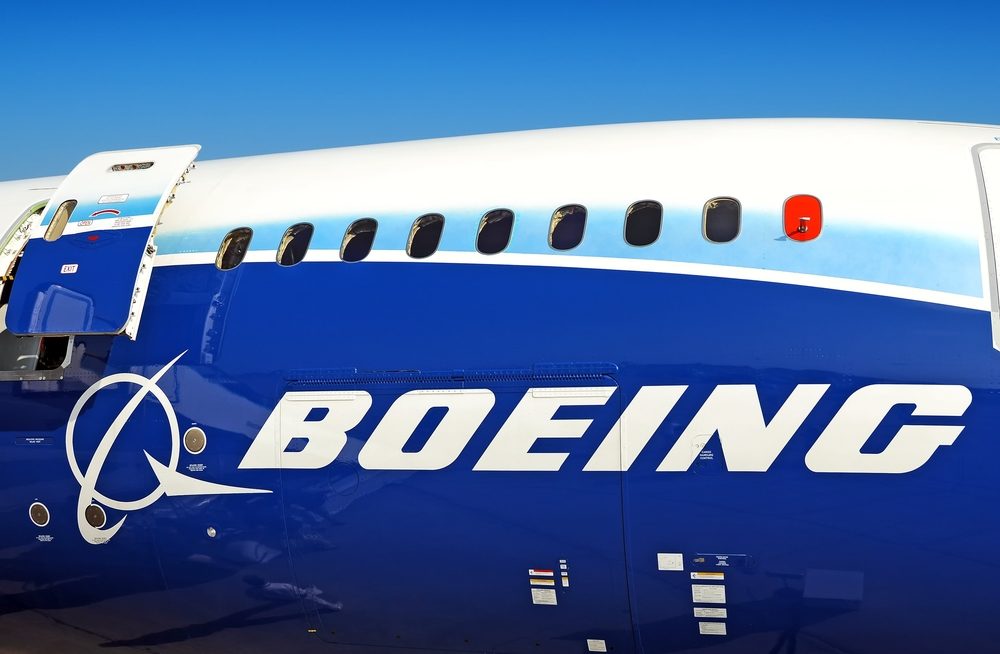FAA Grounds Boeing 737 MAX 9 Airliners After Door Blows Out Midflight
Concerns about the safety of Boeing 737 Max 9 planes emerged after a door plug blew out of an Alaska Airlines flight on Friday, forcing the plane to make an emergency landing.

Federal aviation officials have grounded certain Boeing 737 Max 9 aircraft, requiring them to undergo additional inspections after a door plug blew out of an Alaska Airlines flight on Friday, forcing an emergency landing.
The door plug on a Boeing 737 Max 9 blew out while the plane was at 16,000 feet and carrying 177 passengers. The incident occurred shortly after takeoff from Portland, Oregon, leaving a gaping hole in the side of the aircraft, which was able to make a safe landing without any reported injuries. However, it has raised serious safety concerns about the entire fleet of planes featuring the same design.
Subsequent evaluations of similar aircraft have revealed a number of planes that appear to have loose bolts in the area where the door blew out, which may have contributed to the Alaska Airlines accident. In response, the U.S. Federal Aviation Administration (FAA) issued an Emergency Airworthiness Directive (AD), grounding more than 170 planes.

Did You Know?
Millions of Philips CPAP Machines Recalled
Philips DreamStation, CPAP and BiPAP machines sold in recent years may pose a risk of cancer, lung damage and other injuries.
Learn More“The FAA is issuing this AD to address the potential in-flight loss of a mid cabin door plug, which could result in injury to passengers and crew, the door impacting the airplane, and/or loss of control of the airplane,” the directive states. “The FAA is issuing this AD because the agency has determined the unsafe condition described previously is likely to exist or develop in other products of the same type design.”
All affected planes are grounded until further notice, and at least until the airplanes are inspected and applicable corrective actions have been taken, the agency indicated.
“As operators conduct the required inspections, we are staying in close contact with them and will help address any and all findings,” according to a Boeing press release issued on Monday. “We are committed to ensuring every Boeing airplane meets design specifications and the highest safety and quality standards. We regret the impact this has had on our customers and their passengers.”
Loose Bolts Found
The mid-flight blowout came days after the FAA first raised concerns in late December, at which point it announced the 737 Max 9 was going through targeted inspections to look for possible loose bolts in the rudder system.
Alaska Airlines officials say they have found “loose hardware” on some of the grounded planes, as did United Airlines.
The FAA indicates the planes will remain grounded until enhanced inspections are complete, covering both the left and right cabin door exit plugs, door components, and fasteners. The FAA is also investigating the door plug itself, which crashed into someone’s yard and was found on Saturday.
Boeing 737 Max Problems
This is not the first time the Boeing 737 Max has been linked to serious problems.
Boeing’s 737 MAX jet was introduced as a passenger airliner in January 2016, but was temporarily grounded by the FAA in March 2019, following two deadly crashes within a five months, which killed 346 passengers and crew members combined.
The first Boeing 737 accident occurred on October 29, 2018, when Lion Air Flight 610 went down after departing from Jakarta, Indonesia airport, killing all passengers and crew. Investigators determined that the pilots struggled for 11 minutes to keep the plane in the air, likely due to a problem with the plane’s Angle of Attack sensor, which kept forcing the nose of the plane down, with the pilots unable to shut it off.
A second crash occurred involving another Boeing 737 Max which crashed just minutes into its flight on March 10, 2019, killing all 157 passengers and crew on board Ethiopian Airline Flight 302. The entire 737 Max fleet was grounded worldwide shortly after.
Both crashes were initially attributed to the aircrafts’ angle of attack system, which is the attitude of the wings in relation to airflow. When air flows over the wings at the correct angle, you get lift, which is what makes a plane fly. If the air is not flowing over the wings properly, the plane can stall, which occurs when it loses lift and begins to fall out of the sky.
In court documents, Boeing admitted it deceived the U.S. Federal Aviation Administration (FAA) about the 737 Max’s Maneuvering Characteristics Augmentation System (MCAS), which led to a lack of information about the system. This resulted in a corresponding lack of information in airplane and pilot training manuals which could have been key in preventing both accidents, federal prosecutors claimed.
Boeing agreed to pay the Justice Department a $243.6 million criminal penalty, as well as $1.77 billion in compensation for airline customers and a $500 million fund for families of individuals who died in the crashes.
Get more articles like this sent directly to your inbox.
"*" indicates required fields





0 Comments